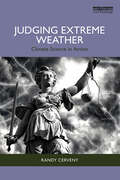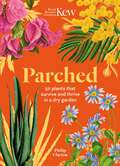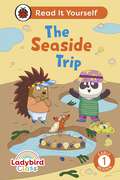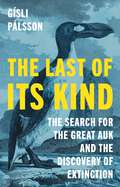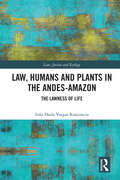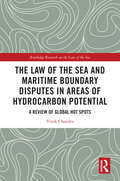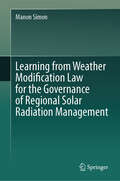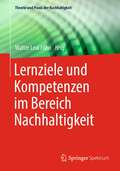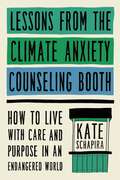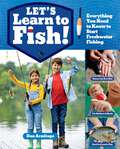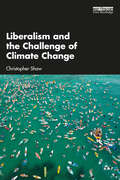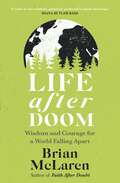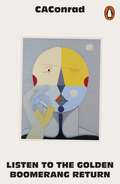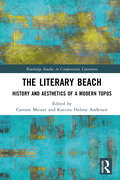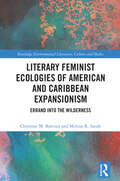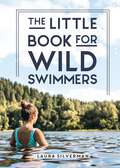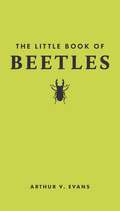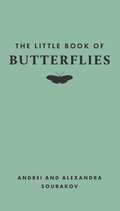- Table View
- List View
Judging Extreme Weather: Climate Science in Action
by Randy CervenyWritten by the World Meteorological Organization (WMO) Rapporteur of Weather and Climate Extremes, this book addresses the reality of extreme weather—how it occurs, how we measure it, and what it means for our future. Weather affects everybody, and with the increasing impact of climate change and the prevalence of storms, droughts and floods, it is clear that we are affecting all aspects of weather. Consequently, people love to talk about weather, complain about it, argue about it—and be intrigued by it. Twenty-four/seven coverage of the weather, however, has helped foster a tendency for marked overstatement—the creation of misconceptions, exaggerations and, frankly, even outright lies. Leading expert in weather and climate, Randy Cerveny, draws on his extensive experience with the WMO and personal research to give the reader a behind-the-scenes look at how weather and climate extremes are recorded and defined. He unpacks the science behind these extremes through a number of specific WMO investigations that span a diverse range of countries and weather events, including lightning, rain, hurricanes and tornadoes. Cerveny balances these factual accounts with playful interludes that detail bizarre and intriguing weather-related stories and anecdotes. This compelling book is a must read for all those interested in the science behind extreme weather.
Kew - Parched: 50 plants that thrive and survive in a dry garden
by Philip ClaytonDazzling, diverse, durable - discover the remarkable drought-proof plants that flourish in the driest environments.With rainfall unpredictable and summers increasingly hot, plants that survive and thrive in these conditions have become more important than ever. Through expert text and beautiful botanical illustrations from the archives of the Royal Botanic Gardens, Kew, Parched explores the captivating variety that exists in the world of dry plants. From poppies and palms to cypress and cyclamen, this stunning book showcases the incredible species that have become a mainstay of dry gardens around the world.
Ladybird Class The Seaside Trip: Read It Yourself - Level 1 Early Reader (Read It Yourself)
by LadybirdJoin Ladybird Class on another imaginative learning adventure! The class find themselves on a beach and meet Clippy Crab in his rock pool home. When the class learn about all the rubbish on the beach, how can they help the seaside creatures?The Seaside Trip is from Early Reader Level 1 and is perfect for children aged from 4+ who are taking their first steps beyond phonics.Each book has been carefully checked by educational and subject consultants and includes comprehension puzzles, book band information, and tips for helping children with their reading.With five levels to take children from first phonics to fluent reading and a wide range of different stories and topics for every interest, Read It Yourself helps children build their confidence and begin reading for pleasure.
The Last of Its Kind: The Search for the Great Auk and the Discovery of Extinction
by Gísli PálssonHow an iconic bird&’s final days exposed the reality of human-caused extinctionThe great auk is one of the most tragic and documented examples of extinction. A flightless bird that bred primarily on the remote islands of the North Atlantic, the last of its kind were killed in Iceland in 1844. Gísli Pálsson draws on firsthand accounts from the Icelanders who hunted the last great auks to bring to life a bygone age of Victorian scientific exploration while offering vital insights into the extinction of species.Pálsson vividly recounts how British ornithologists John Wolley and Alfred Newton set out for Iceland to collect specimens only to discover that the great auks were already gone. At the time, the Victorian world viewed extinction as an impossibility or trivialized it as a natural phenomenon. Pálsson chronicles how Wolley and Newton documented the fate of the last birds through interviews with the men who killed them, and how the naturalists&’ Icelandic journey opened their eyes to the disappearance of species as a subject of scientific concern—and as something that could be caused by humans.Blending a richly evocative narrative with rare, unpublished material as well as insights from ornithology, anthropology, and Pálsson&’s own North Atlantic travels, The Last of Its Kind reveals how the saga of the great auk opens a window onto the human causes of mass extinction.
The Last of Its Kind: The Search for the Great Auk and the Discovery of Extinction
by Gísli PálssonHow an iconic bird&’s final days exposed the reality of human-caused extinctionThe great auk is one of the most tragic and documented examples of extinction. A flightless bird that bred primarily on the remote islands of the North Atlantic, the last of its kind were killed in Iceland in 1844. Gísli Pálsson draws on firsthand accounts from the Icelanders who hunted the last great auks to bring to life a bygone age of Victorian scientific exploration while offering vital insights into the extinction of species.Pálsson vividly recounts how British ornithologists John Wolley and Alfred Newton set out for Iceland to collect specimens only to discover that the great auks were already gone. At the time, the Victorian world viewed extinction as an impossibility or trivialized it as a natural phenomenon. Pálsson chronicles how Wolley and Newton documented the fate of the last birds through interviews with the men who killed them, and how the naturalists&’ Icelandic journey opened their eyes to the disappearance of species as a subject of scientific concern—and as something that could be caused by humans.Blending a richly evocative narrative with rare, unpublished material as well as insights from ornithology, anthropology, and Pálsson&’s own North Atlantic travels, The Last of Its Kind reveals how the saga of the great auk opens a window onto the human causes of mass extinction.
Law, Humans and Plants in the Andes-Amazon: The Lawness of Life (Law, Justice and Ecology)
by Iván Darío Vargas RoncancioExtending law beyond the human, the book examines the conceptual openings, methodological challenges, and ethical conundrums of law in a time of socio-ecological transition. How do we learn and practice law across epistemic and ontological difference? What sort of methodologies do we need? In what sense does conjuring other-than-human beings as sentient, cognitive and social agents—rather than mere recipients of state-sanctioned rights—transform what we mean by law and rights of nature in Latin America and beyond? Legal institutions exclusively focused on human perspectives seem insufficiently capable of addressing current socio-ecological challenges in Latin America and beyond. In response, this book strives to integrate other-than-human beings within legal thinking, institutions, and decision-making protocols. Weaving together various fields of knowledge and worldmaking practices that include – but are not limited to – Indigenous legal traditions, ecological law, multispecies ethnography, and ecological economics, the book pursues a multi-sited ethnography that focuses on the entanglement of law, ecology, and Indigenous cosmologies in Southern Colombia. In so doing, it articulates a general post-anthropocentric legal theory which is proposed, a tool to address socio-ecological challenges such as climate change and bio-cultural loss. This book will be of interest to scholars and students in the disciplines of environmental law, Earth law and ecological law, legal theory and critical legal studies; as well as others working in the in the fields of Indigenous studies, environmental humanities, legal anthropology, and sustainability and climate change justice.
Law, Humans and Plants in the Andes-Amazon: The Lawness of Life (Law, Justice and Ecology)
by Iván Darío Vargas RoncancioExtending law beyond the human, the book examines the conceptual openings, methodological challenges, and ethical conundrums of law in a time of socio-ecological transition. How do we learn and practice law across epistemic and ontological difference? What sort of methodologies do we need? In what sense does conjuring other-than-human beings as sentient, cognitive and social agents—rather than mere recipients of state-sanctioned rights—transform what we mean by law and rights of nature in Latin America and beyond? Legal institutions exclusively focused on human perspectives seem insufficiently capable of addressing current socio-ecological challenges in Latin America and beyond. In response, this book strives to integrate other-than-human beings within legal thinking, institutions, and decision-making protocols. Weaving together various fields of knowledge and worldmaking practices that include – but are not limited to – Indigenous legal traditions, ecological law, multispecies ethnography, and ecological economics, the book pursues a multi-sited ethnography that focuses on the entanglement of law, ecology, and Indigenous cosmologies in Southern Colombia. In so doing, it articulates a general post-anthropocentric legal theory which is proposed, a tool to address socio-ecological challenges such as climate change and bio-cultural loss. This book will be of interest to scholars and students in the disciplines of environmental law, Earth law and ecological law, legal theory and critical legal studies; as well as others working in the in the fields of Indigenous studies, environmental humanities, legal anthropology, and sustainability and climate change justice.
The Law of the Sea and Maritime Boundary Disputes in Areas of Hydrocarbon Potential: A Review of Global Hot Spots (Routledge Research on the Law of the Sea)
by Vivek ChandraThe United Nations Convention on the Law of Sea (‘UNCLOS’) is hailed as one of the most significant multilateral legal agreements executed in the past few decades. However, its shortcomings are neither trivial nor inconsequential, especially regarding maritime boundary disputes involving hydrocarbon resources. This monograph examines the relationship between UNCLOS and maritime boundaries in five non-polar regions, encompassing almost 90% of global unresolved disputes involving offshore hydrocarbon development. The regions, which include the eastern Mediterranean, the Caspian Sea, the Persian Gulf, northeast Asia, and the South China Sea, were chosen for their oil and gas resources potential and recent military skirmishes that have the potential to lead to wider regional confrontations. The book addresses each region’s maritime boundary status in the context of specific articles within UNCLOS that have been exploited by disputing states to justify their overlapping claims. The history and future applicability of multilateral Joint Development Area agreements for each region are evaluated for their potential to provide a cooperative solution to resolve ongoing tensions. Highlighting the limitations of current ‘gun-boat’ diplomacy, the monograph makes practical suggestions for new paradigms for resolving outstanding disputes, promoting lasting peace and generating economic benefits resulting from resource development.
The Law of the Sea and Maritime Boundary Disputes in Areas of Hydrocarbon Potential: A Review of Global Hot Spots (Routledge Research on the Law of the Sea)
by Vivek ChandraThe United Nations Convention on the Law of Sea (‘UNCLOS’) is hailed as one of the most significant multilateral legal agreements executed in the past few decades. However, its shortcomings are neither trivial nor inconsequential, especially regarding maritime boundary disputes involving hydrocarbon resources. This monograph examines the relationship between UNCLOS and maritime boundaries in five non-polar regions, encompassing almost 90% of global unresolved disputes involving offshore hydrocarbon development. The regions, which include the eastern Mediterranean, the Caspian Sea, the Persian Gulf, northeast Asia, and the South China Sea, were chosen for their oil and gas resources potential and recent military skirmishes that have the potential to lead to wider regional confrontations. The book addresses each region’s maritime boundary status in the context of specific articles within UNCLOS that have been exploited by disputing states to justify their overlapping claims. The history and future applicability of multilateral Joint Development Area agreements for each region are evaluated for their potential to provide a cooperative solution to resolve ongoing tensions. Highlighting the limitations of current ‘gun-boat’ diplomacy, the monograph makes practical suggestions for new paradigms for resolving outstanding disputes, promoting lasting peace and generating economic benefits resulting from resource development.
Learning from Weather Modification Law for the Governance of Regional Solar Radiation Management
by Manon SimonThis book investigates the role of cloud seeding laws in governing regional solar radiation management (SRM) activities. It challenges the prevailing belief that cloud seeding laws are irrelevant to regional SRM governance and argues for their applicability. Through case studies in Australia, Canada, and the United States, the book highlights the need for legal frameworks that promote cross-scale interactions, stakeholder participation, flexible decision-making, and conflict resolution. It advocates for adopting adaptive governance principles to effectively manage the risks and uncertainties associated with regional SRM interventions. By filling a gap in the existing literature, this book offers valuable insights and recommendations for the governance of regional SRM, shedding light on the potential of cloud seeding laws to inform and shape SRM governance frameworks. It provides a comprehensive analysis of the legal and normative aspects, offering practical guidance for policymakers, researchers, and stakeholders involved in regional SRM initiatives.
Lernziele und Kompetenzen im Bereich Nachhaltigkeit (Theorie und Praxis der Nachhaltigkeit)
by Walter Leal FilhoDas Buch zeigt Ihnen, wie sich Lernziele und Kompetenzen im Bereich Nachhaltigkeit ergänzen und hilft, die komplexe und vernetzte Natur der Nachhaltigkeit besser zu verstehen, und die damit verbundenen Herausforderungen zu erkennen und anzugehen. Dazu gehört auch die Vermittlung von Kenntnissen über die verschiedenen Aspekte der Nachhaltigkeit, wie z. B. ökologische, soziale und wirtschaftliche Aspekte, sowie deren Wechselwirkung miteinander. Darüber hinaus zeigt das Buch auf, wie Sie die möglichen Auswirkungen von Entscheidungen und Maßnahmen auf die Nachhaltigkeit einschätzen und bewerten können. Das Buch beschreibt die Zusammenhänge zwischen Nachhaltigkeit und Lernen. Es wird erörtert, wie Bildung und Lernen im Bereich der Nachhaltigkeit uns helfen können, die natürliche Welt und unsere Beziehung zu ihr zu verstehen und bessere Entscheidungen zu treffen, um unser Leben und die Umwelt zu verbessern. Es untersucht auch die Rolle von Technologie und Bildung im Bereich der Nachhaltigkeit und erkundet, wie Nachhaltigkeit in den Unterricht und das Lernen integriert werden kann. Schließlich enthält das Buch praktische Ratschläge zur Schaffung eines nachhaltigen Lernumfelds und zur Anwendung von Nachhaltigkeit in der Hochschulbildung und in den unteren Bildungsstufen.
Lessons from the Climate Anxiety Counseling Booth: How to Live with Care and Purpose in an Endangered World
by Kate SchapiraClimate anxiety is real—and this practical, accessible guide helps address it on personal, relational, and structural levels, from the founder of the Climate Anxiety Counseling Booth. Summer after summer is the hottest on record. People&’s homes are flooding, burning, blowing away. We live with the loss, pain, and grief of what&’s happened, and anxiety for what might happen next, as the systems in which we live are increasingly strained. Lessons from the Climate Anxiety Counseling Booth addresses our collective concerns with empathy, grace, and practical strategies to help us all envision a viable future. By moving through your personal and general climate anxiety, frustration, helplessness and grief, you can move toward a sense of shared purpose and community care. You&’ll find actionable steps for connecting with others, identifying and activating community abundance, matching your skills with organized climate activism, and imagining a radically more livable future in order to bring it into being. Lessons from the Climate Anxiety Counseling Booth meets you where you are, not sugarcoating the realities of this growing crisis, but offering practical strategies for meeting a climate-changed present and future with emotional honesty and communal support. In 2014, when Kate Schapira first set up a Climate Anxiety Counseling booth in her hometown of Providence, Rhode Island, far fewer people were talking about climate change and its attendant anxiety, leaving those who couldn&’t ignore climate change and the forces that cause it feeling frantic and alone. Seeking a way to reach out and connect, Schapira set up a Peanuts-style "The Doctor Is In" booth to talk about climate change with her community. Ten years and over 1200 conversations later, Schapira channels all she&’s learned into an accessible, understandable, and aware guide for processing climate anxiety and connecting with others to carry out real change in your life and in your community.
Let's Learn to Fish!: Everything You Need to Know to Start Freshwater Fishing
by Dan ArmitageIn this exciting introduction to freshwater fishing, fishing expert Dan Armitage teaches kids about the best bait and tackle, how to rig a rod, cast a line, and reel in their first fish. Grab a fishing rod and head out to a nearby stream or lake for a fishing adventure! In this skills-based book, kids ages 6 and up go on a fishing trip, led by author and fishing guide Dan Armitage of the Kids' Fishing Fun Program, and learn essential techniques, facts, and tips to learn how to fish and catch a big one! Step-by-step color photography shows everything kids need, the best beginner bait and tackle, key fishing skills such as rigging, casting, and reeling in fish, and tips on where to fish for crappies, bass, catfish, perch, trout, and more. Kids record fishing adventures in the log at the back of the book. The skills teach fun fishing know-how, connect kids to nature, and foster independence and self-reliance.
Liberalism and the Challenge of Climate Change
by Christopher ShawIn this book Christopher Shaw analyses how liberalism has shaped our understanding of climate change and how liberalism is legitimated in the face of a crisis for which liberalism has no answers.The language and symbolism we use to make sense of climate change arose in the post-World War II liberal institutions of the West. This language and symbolism, in neutralising the philosophical and ideological challenge climate change poses to the legitimacy of free market liberalism, has also closed off the possibility of imagining a different kind of future for humanity. The book is structured around a repurposing of the ‘guardrail’ concept, commonly used in climate science narratives to communicate the boundary between safe and dangerous climate change. Five discursive ‘guardrails’ are identified, which define a boundary between safe and dangerous ideas about how to respond to climate change. The theoretical treatment of these issues is complemented with data from interviews with opinion-formers, decision-makers and campaigners, exploring what models of human nature and political possibilities guide their approach to the politics of climate change governance.This book will be of great interest to students and scholars of climate change, liberal politics, environmental communication and environmental politics and philosophy, in general.
Liberalism and the Challenge of Climate Change
by Christopher ShawIn this book Christopher Shaw analyses how liberalism has shaped our understanding of climate change and how liberalism is legitimated in the face of a crisis for which liberalism has no answers.The language and symbolism we use to make sense of climate change arose in the post-World War II liberal institutions of the West. This language and symbolism, in neutralising the philosophical and ideological challenge climate change poses to the legitimacy of free market liberalism, has also closed off the possibility of imagining a different kind of future for humanity. The book is structured around a repurposing of the ‘guardrail’ concept, commonly used in climate science narratives to communicate the boundary between safe and dangerous climate change. Five discursive ‘guardrails’ are identified, which define a boundary between safe and dangerous ideas about how to respond to climate change. The theoretical treatment of these issues is complemented with data from interviews with opinion-formers, decision-makers and campaigners, exploring what models of human nature and political possibilities guide their approach to the politics of climate change governance.This book will be of great interest to students and scholars of climate change, liberal politics, environmental communication and environmental politics and philosophy, in general.
Life After Doom: Wisdom and Courage for a World Falling Apart
by Brian D. MclarenWhat does faith look like when cynicism seems more plausible?What does hope look like when hope seems irrational?What does love look like when hate becomes more popular?In recent years, author and activist Brian McLaren has sensed a widespread emotional shift among growing numbers of people. More and more friends, colleagues, students, and readers confess their sense of futility, their feelings of frustration bordering on despair. They feel that human civilization has passed certain tipping points and that a tide of doom is inexorably rising. This feeling creates a deep inner divide, a tension between a sincere and hopeful commitment to action for the common good on the one hand, and on the other, a feeling that no actions can prevent the arrival of an undesirable or even dystopian future.Life After Doom is a sober analysis of how things stand in relation to climate breakdown, and a deeply insightful exploration of the challenge of living well, maintaining resilience and growing in wisdom and love in the face of nations, ecosystems, economies, religions, and other institutions in disarray. Brian McLaren is the author of Faith After Doubt and Do I Stay Christian? and is a leading and authoritative voice at the intersection of religious faith and contemporary culture.'A book of rare wisdom, genuinely profound in depth and scope'DIANA BUTLER BASS
Listen to the Golden Boomerang Return
by CA ConradThe new collection from 'one of America's most legendary living poets' (Ocean Vuong), written in the drive to fall in love with the world again not as it was, but as it iswhen the hammerapproached we thought is that thing coming this wayBreathing, moving, living on the page, CAConrad’s exhilarating work is centred on the (Soma)tic ritual, their celebrated practice which draws on nature, crystals, meditation and interactions with strangers to create an ‘extreme present’ of unfettered creativity from which poems can emerge.Listen to the Golden Boomerang Return gathers the results of a single new ritual, focused on fellow animals who have found ways to thrive in the Anthropocene, and spanning environments from Seattle – a city built in the midst of an abundant nontropical rainforest – to the Mojave Desert. The poet receives gifts from a crow; associates different parts of their body with nine different species encountered in the desert; and joins a woman each morning in feeding rats in the streets of Rome, taking turns looking out for the police.Written with urgency, hope, anger and joy, the poems that result are an ode to survival in a world that humanity has poisoned, and a testament to a love that knows no by-laws.
The Literary Beach: History and Aesthetics of a Modern Topos (Routledge Studies in Comparative Literature)
As a geo-historical place, the beach integrates a variety of characteristics and functions so multiple that they tend to contradict each other. The beach is both a place of work and trade but also of leisure; it is both a place of therapy and health but also of migration, war, and death; it is a place of mass tourism and boredom but also the place of experiencing the Other; it is a public place but also an uncivilized and desolate place.This book studies the literary representation of the beach from ancient Greek literature up until today, drawing on English, French, Italian, American, and Spanish literatures from various periods and genres and presenting multiple ways of comparing and understanding literary beaches as a ubiquitous literary phenomenon. It demonstrates how the literary beach as a both geo-historical place and as an aesthetic literary commonplace has been a constant and privileged resource for the analysis of more general existential, sociological, and moral problems. This is the case when for instance the Tahitian beach becomes the place of the "already modern" in Stevenson's tales, or when the Italian beach becomes a question of modern feminism in Ferrante.In this sense, literature expands the local or national beach by articulating its transnational complexities.
The Literary Beach: History and Aesthetics of a Modern Topos (Routledge Studies in Comparative Literature)
by Carsten Meiner Katrine Helene AndersenAs a geo-historical place, the beach integrates a variety of characteristics and functions so multiple that they tend to contradict each other. The beach is both a place of work and trade but also of leisure; it is both a place of therapy and health but also of migration, war, and death; it is a place of mass tourism and boredom but also the place of experiencing the Other; it is a public place but also an uncivilized and desolate place.This book studies the literary representation of the beach from ancient Greek literature up until today, drawing on English, French, Italian, American, and Spanish literatures from various periods and genres and presenting multiple ways of comparing and understanding literary beaches as a ubiquitous literary phenomenon. It demonstrates how the literary beach as a both geo-historical place and as an aesthetic literary commonplace has been a constant and privileged resource for the analysis of more general existential, sociological, and moral problems. This is the case when for instance the Tahitian beach becomes the place of the "already modern" in Stevenson's tales, or when the Italian beach becomes a question of modern feminism in Ferrante.In this sense, literature expands the local or national beach by articulating its transnational complexities.
Literary Feminist Ecologies of American and Caribbean Expansionism: Errand into the Wilderness (Routledge Environmental Literature, Culture and Media)
by Christine M. Battista Melissa R. SandeThis book synthesizes ecofeminist theory, American studies, and postcolonial theory to interrogate what New Americanist William V. Spanos articulates as the "errand into the wilderness": the ethic of Puritanical expansionism at the heart of the U.S. empire that moved westward under Manifest Destiny to colonize Native Americans, non-whites, women, and the land. The project explores how the legacy of the errand has been articulated by women writers, from the slave narrative to contemporary fiction. Uniting texts across geographical and temporal boundaries, the book constructs a theoretical approach for reading and understanding how women authors craft counter-narratives at the intersection of metaphorical and literal landscapes of colonization. It focuses on literature from the United States and the Caribbean, including the slave narratives by Sojourner Truth, Harriet E. Wilson, and Harriet Jacobs, and contemporary work by Toni Morrison, Maryse Condé, Edwidge Danticat, and Native American writer Linda Hogan. It charts the contrast between America’s earliest idyllic visions and the subsequent reality: an era of unprecedented violence against women of color and the environment. This study of many canonical writers presents an important and illuminating analysis of American mythologies that continue to impact the cultural landscape today. It will be a significant discussion text for students, scholars, and researchers in environmental humanities, ecofeminism, and postcolonial studies.
Literary Feminist Ecologies of American and Caribbean Expansionism: Errand into the Wilderness (Routledge Environmental Literature, Culture and Media)
by Christine M. Battista Melissa R. SandeThis book synthesizes ecofeminist theory, American studies, and postcolonial theory to interrogate what New Americanist William V. Spanos articulates as the "errand into the wilderness": the ethic of Puritanical expansionism at the heart of the U.S. empire that moved westward under Manifest Destiny to colonize Native Americans, non-whites, women, and the land. The project explores how the legacy of the errand has been articulated by women writers, from the slave narrative to contemporary fiction. Uniting texts across geographical and temporal boundaries, the book constructs a theoretical approach for reading and understanding how women authors craft counter-narratives at the intersection of metaphorical and literal landscapes of colonization. It focuses on literature from the United States and the Caribbean, including the slave narratives by Sojourner Truth, Harriet E. Wilson, and Harriet Jacobs, and contemporary work by Toni Morrison, Maryse Condé, Edwidge Danticat, and Native American writer Linda Hogan. It charts the contrast between America’s earliest idyllic visions and the subsequent reality: an era of unprecedented violence against women of color and the environment. This study of many canonical writers presents an important and illuminating analysis of American mythologies that continue to impact the cultural landscape today. It will be a significant discussion text for students, scholars, and researchers in environmental humanities, ecofeminism, and postcolonial studies.
The Little Book for Wild Swimmers: Reconnect With Your Wild Side and Discover the Healing Power of Swimming Outdoors
by Laura SilvermanEscape the frantic pace of everyday, reconnect with your wild side and discover the healing power of swimming outdoors. Whether you've already taken the plunge or simply want to dip a toe in, this beautiful book is brimming with all the tips and inspiration you need to find your way back to nature and harness the benefits of wild swimming.
The Little Book of Beetles (Little Books of Nature #2)
by Arthur V. EvansA charming, richly illustrated, pocket-size exploration of the world&’s beetlesPacked with surprising facts, this delightful and gorgeously designed book will beguile any nature lover. Expertly written and beautifully illustrated throughout with color photographs and original color artwork, The Little Book of Beetles is an accessible and enjoyable mini reference about the world&’s beetles, with examples drawn from across the globe. It fits an astonishing amount of information in a small package, covering a wide range of topics—from anatomy, diversity, and reproduction to habitat and conservation. It also includes curious facts and a section on beetles in myths, folklore, and modern culture from around the world. The result is an irresistible guide to the amazing lives of beetles.A beautifully designed pocket-size book with a foil-stamped cloth coverFeatures some 140 color illustrations and photosMakes a perfect gift
The Little Book of Beetles (Little Books of Nature #2)
by Arthur V. EvansA charming, richly illustrated, pocket-size exploration of the world&’s beetlesPacked with surprising facts, this delightful and gorgeously designed book will beguile any nature lover. Expertly written and beautifully illustrated throughout with color photographs and original color artwork, The Little Book of Beetles is an accessible and enjoyable mini reference about the world&’s beetles, with examples drawn from across the globe. It fits an astonishing amount of information in a small package, covering a wide range of topics—from anatomy, diversity, and reproduction to habitat and conservation. It also includes curious facts and a section on beetles in myths, folklore, and modern culture from around the world. The result is an irresistible guide to the amazing lives of beetles.A beautifully designed pocket-size book with a foil-stamped cloth coverFeatures some 140 color illustrations and photosMakes a perfect gift
The Little Book of Butterflies (Little Books of Nature #1)
by Andrei Sourakov Alexandra A. SourakovA charming, richly illustrated, pocket-size exploration of the world&’s butterfliesPacked with surprising facts, this delightful and gorgeously designed book will beguile any nature lover. Expertly written and beautifully illustrated throughout with color photographs and original color artwork, The Little Book of Butterflies is an accessible and enjoyable mini reference about the world&’s butterflies, with examples drawn from across the globe. It fits an astonishing amount of information in a small package, covering a wide range of topics—from anatomy, diversity, and reproduction to habitat and conservation. It also includes curious facts and a section on butterflies in myths, folklore, and modern culture from around the world. The result is an irresistible guide to the amazing lives of butterflies.A beautifully designed pocket-size book with a foil-stamped cloth coverFeatures some 140 color illustrations and photosMakes a perfect gift
